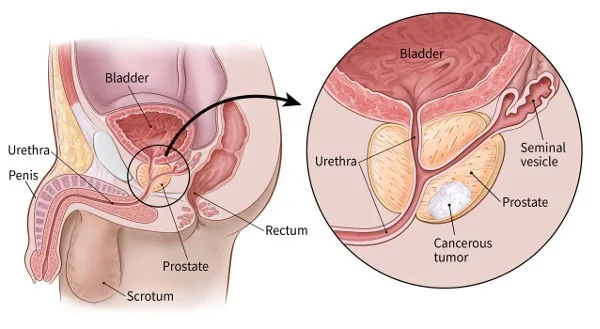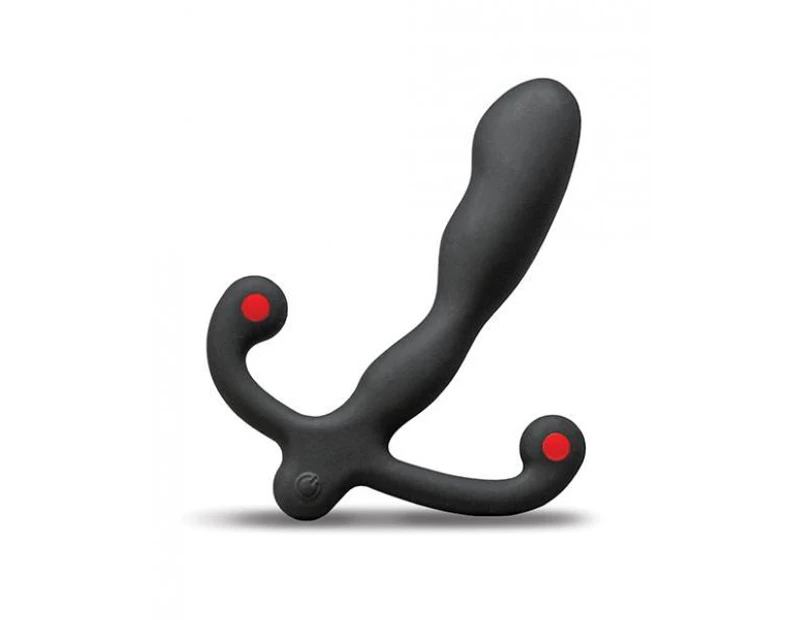Prostate Health: Guide To Male Wellness
Understanding the Prostate Gland
The prostate is a critical part of the male reproductive system and caring for it is a Guide To Male Wellness. Nestled deep within the pelvis, just below the bladder. This small, walnut-sized gland plays a pivotal role in men’s sexual health and overall well-being.
The Prostate’s Primary Function
The primary role of the prostate is to produce and secrete prostate fluid, one of the main components of semen. This fluid is vital for sperm mobility and viability, helping to nourish and transport sperm during ejaculation.
Location and Structure
Positioned just in front of the rectum and below the bladder, the prostate surrounds the urethra. This strategic placement means that any significant change in its size can affect urinary functions. Its structure is unique, consisting of several small glands enclosed by a fibrous tissue known as the prostate capsule.
Hormonal Influence
The prostate’s function and growth are heavily influenced by male hormones, particularly testosterone. These hormones regulate the production of prostate fluid and ensure the gland functions effectively.
Importance in Health Monitoring
Given its role and location, the prostate is also a common site for health issues, including prostate cancer, which is one of the most common types of cancer among men. Early detection and management of prostate health are crucial for long-term well-being, making regular medical check-ups essential as men age.
Prostate cancer statistics are stark, highlighting the importance of awareness and early detection. In the United States alone, over 160,000 new cases are reported annually, with nearly 30,000 men dying from late-detected cancer. Globally, 1 in 8 men will develop prostate cancer during their lifetime, making it the second most common cancer in men after skin cancer.
Although survival rates are high with early detection, they diminish as cancer progresses to more advanced stages. Regular screening is essential once men reach an at-risk age.

Recognizing the Symptoms of Prostate Cancer
Prostate cancer can be elusive, with some men showing no symptoms at all, while others might overlook symptoms, mistaking them for less serious conditions. Key symptoms to watch for include:
- Difficulty starting or maintaining a flow of urine
- A slow or interrupted urine stream
- Frequent urination, particularly at night
- Urinary incontinence
These symptoms might suggest early stages of prostate cancer, but it’s crucial to remember that not all men will experience them. Men with a family history of prostate cancer or those over 50 should discuss regular screenings with their doctor.
In more advanced stages, symptoms can become more pronounced and may include:
- Blood in the urine
- Painful urination
- Persistent pain in the lower back or pelvic area
These signs could also be indicative of benign prostatic hyperplasia, a non-cancerous enlargement of the prostate. If you notice any of these symptoms, it’s important to consult your general practitioner.
Challenges in Detection and Prevention
Detecting prostate cancer early is challenging, as no single test can diagnose it definitively. Typically, a combination of a Digital Rectal Exam (DRE) and a PSA test is used. PSA, or prostate-specific antigen, is a protein produced by the prostate gland; elevated levels can indicate prostate cancer but can also be linked to other medical conditions. Open communication with your doctor about these tests is crucial to formulating an effective treatment plan.
Treatment and Prevention Strategies
Interestingly, studies have shown that men who ejaculate more than four times per week have up to a 33% lower risk of developing prostate cancer. Contrary to what might be assumed, the number of sexual partners does not impact this statistic; rather, it’s the frequency of ejaculation that appears to be beneficial.
Understanding prostate health is key to prevention and early treatment. Men are encouraged to maintain regular check-ups and discuss their health openly with their healthcare provider.
Prostate Massage For Better Health
People sacrifice health for pleasure and vice versa. In some few and rare instances where both ultimate pleasure and health are achievable, each person will experience a whole new satisfaction in their life. One of those instances includes using a prostate massager to stimulate the prostate. Not only will you experience mind-blowing stimulations/orgasms but there are also some key health benefits as well.
Previously anal sex in men was considered gay, dirty and taboo. Increasingly, anal sex is being utilized by straight couples and single men alike. There is now an understanding that anal play is not intrinsically linked to the idea of being gay. Role playing,m pegging, prostate massage is more common. Using anal sex toys will not make you gay.
There are many gay men, tops who do not like anal sex. In part, it’s very easy to blame gay culture for the dislike of anal sex, but as a matter of fact the dislike of anal play is not attributed to gender or sexuality. It is more in terms of how you were brought up and the relationship between you and your body. For this reason a lot of men will discuss their latest hook up, but might not necessarily enjoy the idea of talking about their prostate play or health.
Male Sex Toys Have Benefits
There are benefits to men who perform prostate massage and this is something that we cannot ignore.
By definition the prostate is a gland that stores an essential component of semen. It is located at the penis root below the bladder. It’s the size of a walnut. Massaging the prostate will lead to the release of stagnant semen which consequently leads to the cleansing of your prostate. When you fail to do this often the stagnant semen will result in a build-up of bacteria, which may lead to swelling.
A regular prostate massage has a variety of benefits. Some of the benefits include: reduction in the risk of some complications and diseases such as genital pain, prostatitis, and prostate cancer, urination during the night and erectile dysfunction. Seminal fluid and its circulation increase not to mention the overall improvement to erectile function by regularly undertaking prostate massages. The best part about this massage is that the benefits accrued are long term.

Safe Prostate Massage Techniques
Some people have experimented by having prostate massage using their fingers. They do this by first of all locating the prostate and manually stimulating it repetitively by moving their finger in a back and forth movement. This can be a daunting task and the flexibility required might be difficult for some.
Prostate massage with the finger are at first the least threatening to a newbie. The reason for this is that you can directly feel where your finger is, whilst you learn where the prostate is. Once you have located the prostate and are comfortable massaging it you can try a purpose made male sex toy prostate massager.
A correct prostate massage technique is necessary for best effects. Learn how to perform an effective prostate massage.
Step 1: Understand the Purpose
Understand why you are performing the massage. Prostate massage can help release fluid from the prostate ducts, which can aid in alleviating symptoms of conditions like benign prostatic hyperplasia (BPH) and chronic prostatitis.
Step 2: Prepare for Cleanliness
Ensure cleanliness to prevent infections. Wash your hands thoroughly with soap and water. Wear sterile disposable gloves for added safety.
Step 3: Get Comfortable
The receiver should find a comfortable position that allows easy access to the prostate. Common positions include lying on one side with knees bent towards the chest or kneeling with the buttocks raised.
Step 4: Use Lubrication
Apply a generous amount of water-based lubricant on the gloves and the anal opening. This reduces discomfort and helps prevent tissue damage.
Step 5: Initial Relaxation
Start by gently massaging the perineum (the area between the scrotum and anus) to help relax the area. This can help make the internal massage more comfortable.
Step 6: Locating the Prostate
Carefully insert a finger into the anus, up to about the second knuckle. Feel towards the belly side; the prostate is a walnut-sized gland located about two inches inward.
Step 7: Gentle Massage
Once the prostate is located, apply gentle pressure and massage in a circular or back-and-forth motion. The pressure should be firm but not painful.
Step 8: Monitor for Discomfort
Continually check in with the receiver about their comfort level. Any sharp pain means you should stop immediately.
Step 9: Ending the Massage
Gradually slow down the movements and gently remove your finger. Ensure that the area is cleaned again if needed.
Step 10: Aftercare
Discuss the experience with the receiver. Some men may feel discomfort or see slight spotting of blood. If any discomfort or bleeding is more than minimal, consult a healthcare provider.
Important Safety Tips:
- Prostate massage should not be performed on individuals with acute prostatitis, as it can lead to the spread of infection.
- Avoid prostate massage if there is a possibility of prostate cancer, as the massage could potentially spread cancerous cells.
- If pain, fever, or discomfort occurs after the massage, seek medical advice promptly.
Many people who start with prostate massage for health begin to enjoy it. They find what is commonly referred to as the ‘male g spot’. Massaging the G-Spot is often called ‘milking the prostate’ as semen is ejaculated. This video will show you how. By stimulating the male g-spot, also known as the prostate, you can effectively reduce your risk for developing prostate cancer.
Did we also mention that it feels absolutely amazing and can give you the most intense full body orgasms of your life?
FAQ’s On Prostate Health
1. What are the common signs and symptoms of prostate problems?
Answer: Common symptoms of prostate issues include frequent urination, difficulty starting or stopping the flow of urine, weak or interrupted urine flow, pain during urination or ejaculation, and, in more severe cases, blood in urine or semen. These symptoms can be indicative of various conditions, including benign prostatic hyperplasia (BPH), prostatitis, or prostate cancer.
2. How is prostate cancer diagnosed?
Answer: Prostate cancer is typically diagnosed through a combination of screening methods. This includes a Prostate-Specific Antigen (PSA) blood test, which measures the level of PSA in the blood, and a Digital Rectal Exam (DRE), where a physician feels the prostate through the rectum to check for any abnormalities. If these tests suggest an anomaly, a biopsy may be recommended to confirm the diagnosis.
3. Can diet affect prostate health?
Answer: Yes, diet plays a crucial role in prostate health. Consuming a diet rich in fruits, vegetables, and whole grains while limiting the intake of red meat, dairy products, and saturated fats can help maintain a healthy prostate. Foods high in antioxidants, such as tomatoes (lycopene), pomegranates, and green tea, have been particularly noted for their potential prostate health benefits.
4. What are the treatment options for prostate cancer?
Answer: Treatment options for prostate cancer depend on several factors, including the stage of the cancer, the age and overall health of the patient, and the patient’s preferences. Common treatments include active surveillance (monitoring the cancer closely), surgery (prostatectomy), radiation therapy, hormone therapy, chemotherapy, and targeted therapy. Each option has its own benefits, risks, and potential side effects.
5. How can I prevent prostate problems?
Answer: While you cannot prevent all prostate problems, you can take steps to reduce your risk. These include maintaining a healthy weight, staying physically active, following a healthy diet, and having regular medical check-ups that include prostate screenings. Discussing your risk factors with your doctor can help you decide when to begin screening for prostate health issues.



